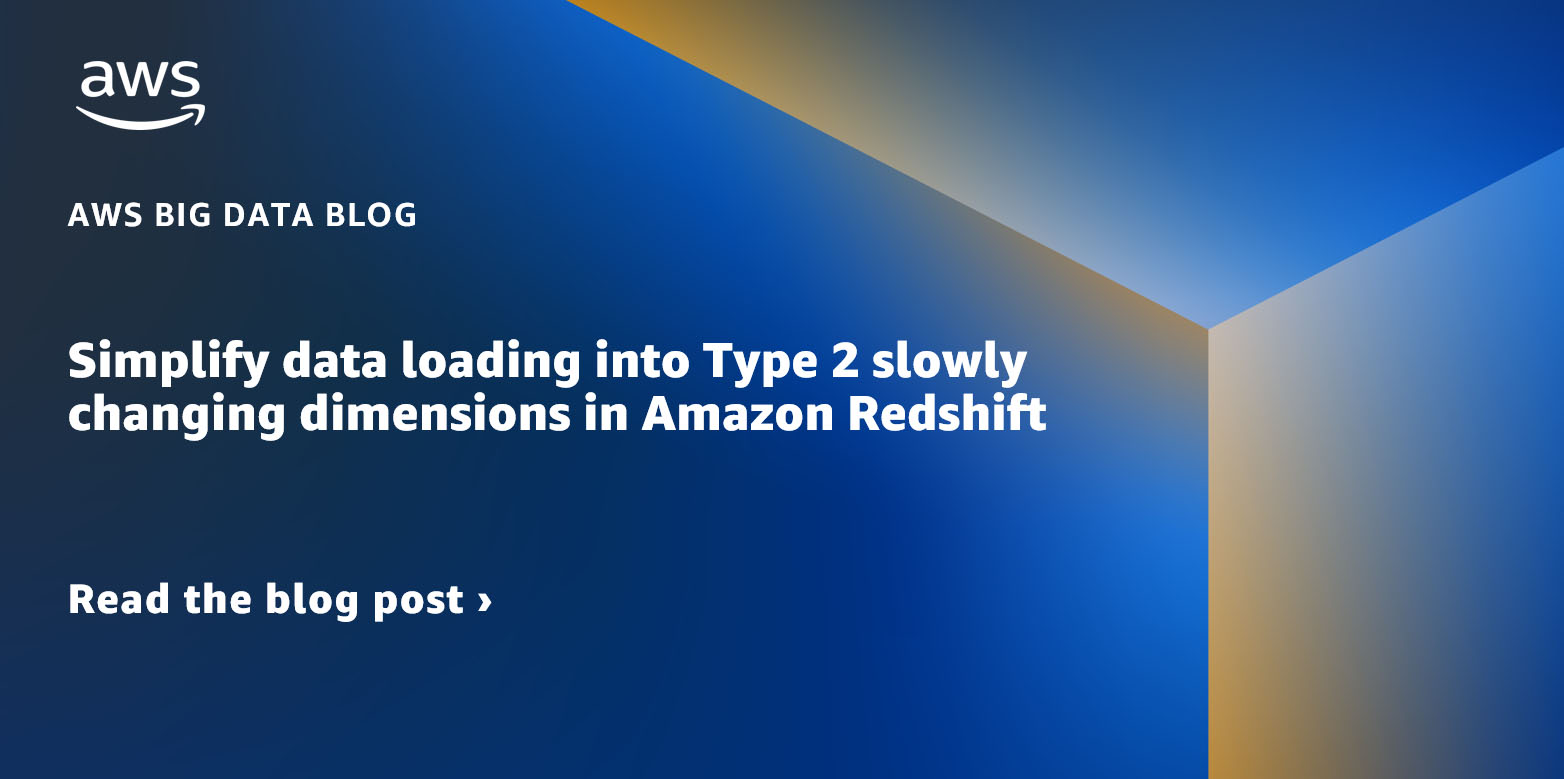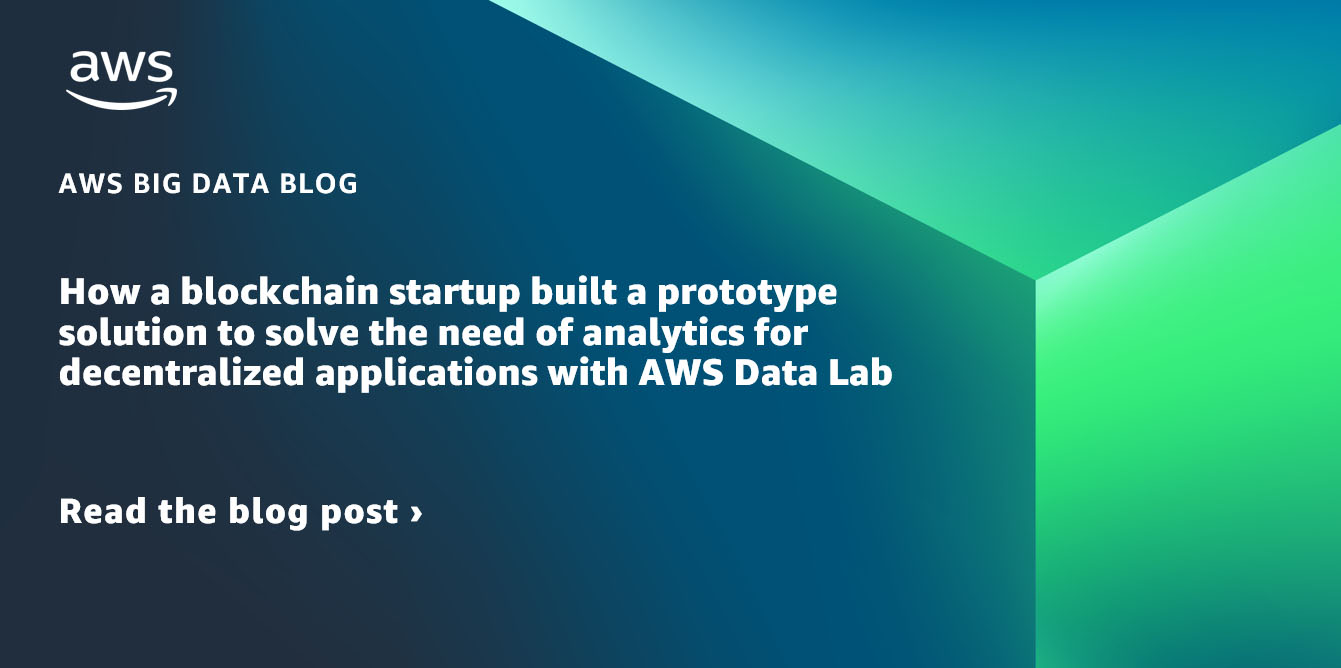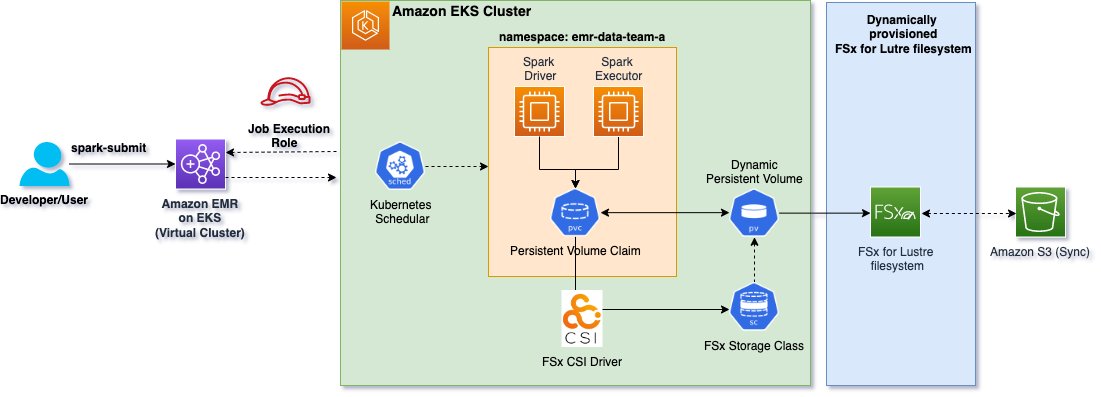AWS Big Data Blog
Category: Storage
Simplify data loading into Type 2 slowly changing dimensions in Amazon Redshift
Thousands of customers rely on Amazon Redshift to build data warehouses to accelerate time to insights with fast, simple, and secure analytics at scale and analyze data from terabytes to petabytes by running complex analytical queries. Organizations create data marts, which are subsets of the data warehouse and usually oriented for gaining analytical insights specific […]
Synchronize your Salesforce and Snowflake data to speed up your time to insight with Amazon AppFlow
This post was co-written with Amit Shah, Principal Consultant at Atos. Customers across industries seek meaningful insights from the data captured in their Customer Relationship Management (CRM) systems. To achieve this, they combine their CRM data with a wealth of information already available in their data warehouse, enterprise systems, or other software as a service […]
Analyze Amazon S3 storage costs using AWS Cost and Usage Reports, Amazon S3 Inventory, and Amazon Athena
Since its launch in 2006, Amazon Simple Storage Service (Amazon S3) has experienced major growth, supporting multiple use cases such as hosting websites, creating data lakes, serving as object storage for consumer applications, storing logs, and archiving data. As the application portfolio grows, customers tend to store data from multiple application and different business functions […]
How BookMyShow saved 80% in costs by migrating to an AWS modern data architecture
This is a guest post co-authored by Mahesh Vandi Chalil, Chief Technology Officer of BookMyShow. BookMyShow (BMS), a leading entertainment company in India, provides an online ticketing platform for movies, plays, concerts, and sporting events. Selling up to 200 million tickets on an annual run rate basis (pre-COVID) to customers in India, Sri Lanka, Singapore, […]
Simplify data ingestion from Amazon S3 to Amazon Redshift using auto-copy (preview)
Amazon Redshift is a fast, petabyte-scale cloud data warehouse that makes it simple and cost-effective to analyze all of your data using standard SQL and your existing business intelligence (BI) tools. Tens of thousands of customers today rely on Amazon Redshift to analyze exabytes of data and run complex analytical queries, delivering the best price-performance. […]
How GoDaddy built a data mesh to decentralize data ownership using AWS Lake Formation
This is a guest post co-written with Ankit Jhalaria from GoDaddy. GoDaddy is empowering everyday entrepreneurs by providing all the help and tools to succeed online. With more than 20 million customers worldwide, GoDaddy is the place people come to name their idea, build a professional website, attract customers, and manage their work. GoDaddy is […]
Get started with data integration from Amazon S3 to Amazon Redshift using AWS Glue interactive sessions
Organizations are placing a high priority on data integration, especially to support analytics, machine learning (ML), business intelligence (BI), and application development initiatives. Data is growing exponentially and is generated by increasingly diverse data sources. Data integration becomes challenging when processing data at scale and the inherent heavy lifting associated with infrastructure required to manage […]
How a blockchain startup built a prototype solution to solve the need of analytics for decentralized applications with AWS Data Lab
This post is co-written with Dr. Quan Hoang Nguyen, CTO at Fantom Foundation. Here at Fantom Foundation (Fantom), we have developed a high performance, highly scalable, and secure smart contract platform. It’s designed to overcome limitations of the previous generation of blockchain platforms. The Fantom platform is permissionless, decentralized, and open source. The majority of […]
Build incremental crawls of data lakes with existing Glue catalog tables
AWS Glue includes crawlers, a capability that make discovering datasets simpler by scanning data in Amazon Simple Storage Service (Amazon S3) and relational databases, extracting their schema, and automatically populating the AWS Glue Data Catalog, which keeps the metadata current. This reduces the time to insight by making newly ingested data quickly available for analysis […]
Run Apache Spark with Amazon EMR on EKS backed by Amazon FSx for Lustre storage
September 2023: This post was reviewed and updated for accuracy to reflect recent improvements and changes. Traditionally, Spark workloads have been run on a dedicated setup like a Hadoop stack with YARN or MESOS as a resource manager. Starting from Apache Spark 2.3, Spark added support for Kubernetes as a resource manager. The new Kubernetes […]









